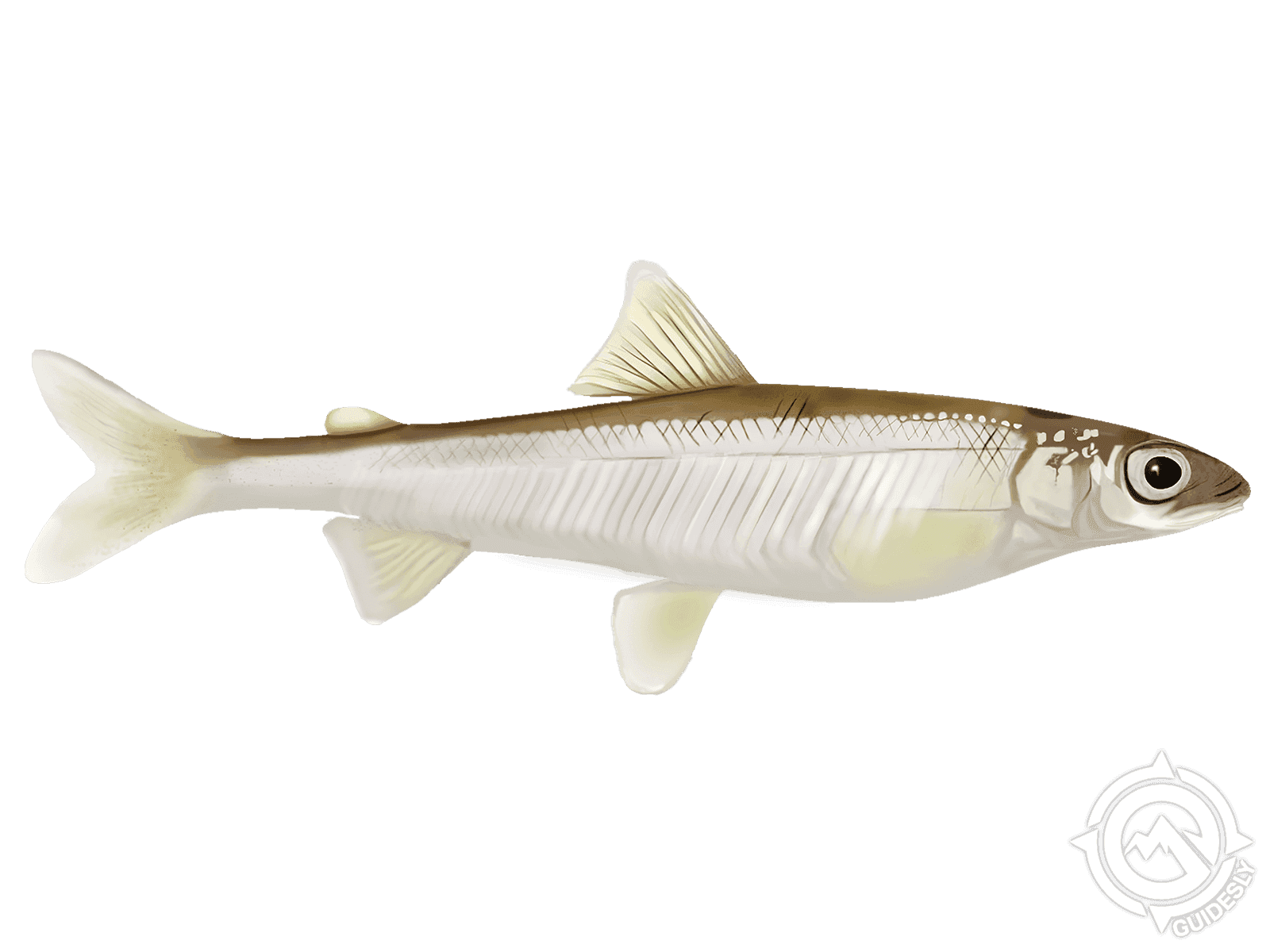Pygmy Whitefish

Species Details
Prosopium Coulterii
Salmonidae
Salmoniformes
Nearshore, Offshore
2 - 3 lbs.
1" - 12"
Pygmy Whitefish (Prosopium coulterii) Fish Description
The Pygmy Whitefish belongs to the Salmonidae family. Compared to other whitefishes (see Lake Whitefish, Mountain Whitefish, Round Whitefish, and Ocean Whitefish) , the Pygmy Whitefish is small with a cylindrical, elongated body. Its belly is white while its back is brownish; its color is generally silvery. Juvenile Pygmy Whitefish have “parr marks” which are black spots on the sides. Its pectoral and dorsal fins are clear, whereas its pelvic and anal fins are whitish; its tail has some faint dark spot.
The distinguishing features of the Pygmy Whitefish are its large eyes, small and toothless mouth, blunt snout, and small size. It has large scales, with 54 to 79 embedded along its lateral lines, 16 to 20 around its caudal peduncle, and 31 to 40 around its body.
Diet and Size
Some of the Pygmy Whitefish’s favorites are crustaceans, mollusks, fish eggs, and larvae of aquatic insects. On the other hand, pikes, kingfishers, burbot, trouts, and terns prey on the Pygmy Whitefish.
The Pygmy Whitefish has an average length of 4.7 inches; some may grow from 1.2 up to 6 inches. Some big ones reach up to 12 inches. Pygmy Whitefish are so small; they weigh around 30 to 100 grams only. They can live between 3 to 10 years. Male Pygmy Whitefish mature at age 1 to 3 years, whereas females develop at 2 to 4 years.
Interesting Facts About the Pygmy Whitefish
- Rosa Smith Eigenmann and Carl H. Eigenmann were the first to describe the Pygmy Whitefish. In 1892, they named this species after botanist John Coulter.
- The Greek word Prosopium means ‘mask’, referring to the Pygmy Whitefish’s big bones in front of its eyes.
- The body of a Pygmy Whitefish is shaped like a cigar, rounded in the cross-section.
- Pygmy Whitefish are survivors of the Ice Age or Glacial Period.
- This fish can tolerate low-oxygen environments.
Pygmy Whitefish — Fishing Techniques
Anglers can use trap nets and gill nets in catching Pygmy Whitefish especially in the months of May to November. Researchers have observed that at nighttime, this fish swims inshore with temperatures ranging from 54 °F to 64 °F. During the day, it is found offshore where the waters are colder.
Anglers should note that Pygmy Whitefish often aggregate in the Dina Lake. One successful trap net can catch thousands of this fish. Like its relatives, the Pygmy Whitefish are best caught using the usual fish pole and line using squid as bait. The rod and reel combination works just as fine.
The Pygmy Whitefish is a species of concern in Montana. Its population has been declining due to the loss of their habitat. The Pygmy Whitefish populations in the Pacific and Western Arctic are not at risk, but they are threatened in the Great Lakes, and of Special Concern in the Waterton Lake.
Pygmy Whitefish Habitat and Distribution
This species of fish prefers cold and deep waters with a temperature around 50 °F. They are very sensitive to changes in temperatures especially when the waters get warmer. Pygmy Whitefish spawn in tributary streams and lakes.
They are generally found in the lakes and mountain streams of the western side of North America. In the Rocky Mountains, they thrive in depths measuring 20 feet. This salmonid is native to the waters of northwestern Montana. They can also be found in Ekityki Lake (Chukchi Peninsula), and in Lake Superior (where they live in waters up to 292 feet deep).






